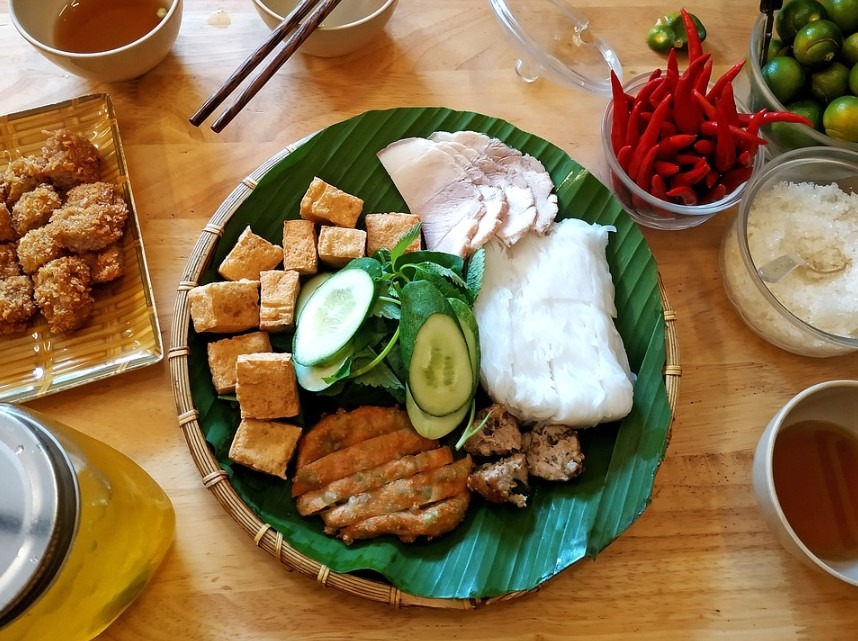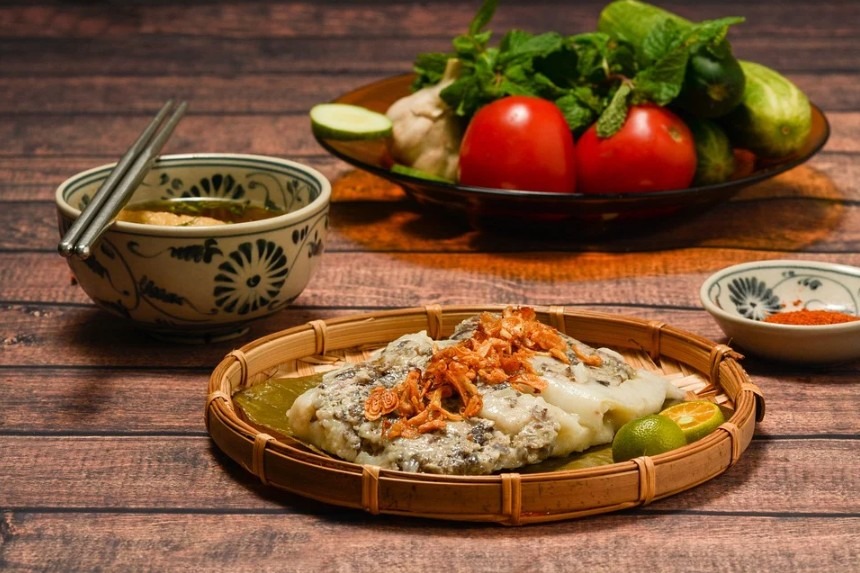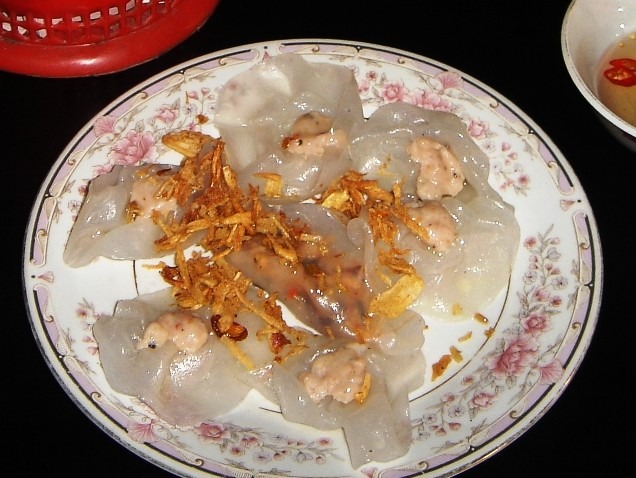Vietnamese cuisine is simple but never dull, as foods and beverages in this country feature a combination of five fundamental tastes in overall meals, namely sweet, sour, spicy, and bitter.Aside from the common features that Vietnamese dishes share around the whole country, food in each of its regions has its own distinctive and unique characteristics that represent the geographical location and living conditions of the people there. But despite the varied landscape of Vietnam, all of the food came back to that balance of heat, sweetness, sourness, bitterness, herbs, and their powerful fish sauce. All of these make Vietnamese cuisine one of the best foods in the world.
When you ask people about Vietnamese food, many international tourists would mention fish sauce, square cake, Pho, and steamed rice. Yes, all of these foods are very popular in Vietnam, but to talk about Vietnamese cuisine, these are never enough. Why? Because Vietnam has a lot of dishes coming from its 63 provinces and cities, which a lot of people, both domestic and international, love. And did you know that Vietnam food is considered to be one of the healthiest cuisines all over the world?
If you want to know more about the different dishes that you can try in Vietnam, you’re in the right place. Today, we are giving you a guide to the regional variations of Vietnamese cooking.
Fundamental Features
Vietnam has three regions, Northern Vietnam, Central Vietnam, and Southern Vietnam. And the mainstream culinary traditions in all of these regions share some fundamental features. Here they are:
- Freshness of food: Meats are usually cooked briefly. Vegetables are eaten fresh, and if they are cooked, they are usually stir-friend quickly or boiled.
- Adding herbs and vegetables:Herbs and vegetables are important to many dishes in Vietnam, and they are usually used abundantly.
- Variation and harmony of textures: Vietnamese dishes can be crisp and soft, watery and crunchy, and delicate and rough.
- Soup: Broths and soup-based dishes are common in all the regions of Vietnam.
- Presentation:Vietnamese meals are usually accompanied by condiments, which are usually colorful and arranged in an eye-pleasing way.
But even though all regions share these same key features, their culinary or cooking tradition differs from region to region. Here are the regional variations of Vietnamese cooking.
Northern Vietnamese Cooking
When people in Northern Vietnam cook dishes, they tend to use less spice compared to those in other regions, even though it has a colder climate. The most prominent ingredient in Northern Vietnamese cooking is black pepper when it comes to making hot flavor. The cooking in this region is not biased towards any particular flavor. Almost all dishes in the North reflect subtle combinations of many different flavoring ingredients, and they feature light and balanced flavors. They also use different meats and crustaceans frequently, including beef, chicken, pork, prawns, freshwater fish, lobsters, crabs, mussels, and shrimps.
Here are some of the most popular dishes that you can try in Northern Vietnam:
- Bun Cha
Hanoi is the modern capital city, and it is rich in flavor as it is in culture. It is a foodie haven, making it a perfect place for people who are looking into trying out different foods. Bun cha is one of the popular dishes you can try in Hanoi. It is Vietnamese comfort food that is composed of juicy grilled pork served with a side of rice noodles and herbs. Its filling makes it a very flavorful dish.
- Pho Ga and Cha Ca La Vong
Pho Ga is another Northern Vietnamese dish that tourists will surely love. It is a simple rice noodle with chicken that is made more flavorful using combinations of different flavoring ingredients. Cha Ca La Vong, on the other hand, is also a rice noodle, but instead of chicken, grilled fish is added to it.
Central Vietnamese Cooking
Foods that are cooked in Central Vietnam are not like those of the North that are mild. It’s because Central Vietnamese cuisine is characterized by its hot and spicy flavors. Their way of cooking, especially in Hue, reflects the influence of ancient Vietnamese royal cuisine. The foods in this region are admired greatly due to its artfully-decorated meals that are prepared from a lot of complex dishes. Aside from that, food in this region is typically served in a fairly small size, and they are very spicy.
Some of the usual ingredients used in Central Vietnam in cooking their dishes are chilies, black peppers, and shrimp sauces. When you visit Central Vietnam, you’d also notice the presence of numerous vegetarians in the city. This is because many restaurants here serve Buddhist followers, making it easy for tourists to sample vegetarian diets.
Here are some of the most popular dished cooked in Central Vietnam:
- Banh Bao Vac
Banh Bao Vac is a dish from Hoi An, which is the culinary capital of Vietnam. Banh Bao Vac, when translated to English, is a white rose. It is a dish unique to Hoi An, and the original recipe to cook it remains a guarded secret. They are small and delicate dumplings that are shaped like a rose. They are filled with shrimp and topped with crispy onions. You’ll be able to try it almost anywhere in Hoi An.
- Banh Beo
Banh Beo is a dish from Hue, which is the former capital of Vietnam during the Nguyen dynasty. It is a historic and scenic city, and its royal history made its culture sophisticated and flavorful. Banh Beo is small, thin rice paper crepes that are usually eaten as an appetizer. They are individually served and are typically topped with dried shrimp and served with scallions and tangy fish sauce.
- Mi Quang
Mi Quang or also known as Quang noodles, is a noodle and broth dish that is exclusive to the Quang Nam province of Central Vietnam. It differs from the other noodle dishes throughout the rest of Vietnam because of its yellow-tinted noodles and modest broth and seasonings. This soup features only a small amount of a rich pork broth. It also features a garnish of peanuts or sometimes crispy rice crackers on top.
Southern Vietnamese Cooking
Southern Vietnam has warm weather and fertile soil. This is why people here can grow a remarkable variety of vegetables, fruits, and as well as livestock. When you visit Southern Vietnam, you’ll be able to try exotic foods and as well as fresh fruits and vegetables. Dishes in Southern Vietnam are usually seasoned with lots of garlic, fresh herbs, and shallots. People in the south are biased towards adding sugar to food compared to other regions. You can also see their tendency for preferring sweetness through their prevalent use of coconut milk in cooking. In addition to that, food made from seafood is also a big part of Southern Vietnamese cuisine.
Here are some of the popular dishes that you can try in Southern Vietnam:
- Pho
Pho originated in Ho Chi Minh City or is formerly known as Saigon. The difference of Southern Pho from the Pho served throughout the rest of Vietnam is the distinct and complex blend of fresh herbs and spices that it includes, such as ginger, cinnamon, coriander, and star anise to name a few. Pho from Southern Vietnam is also spicier and usually served with chili peppers and lime, which are directly added to the broth. It is a spicy, savory, and hearty treat that you can eat for breakfast, lunch, or dinner.
- Hu Tieu
Hu Tieu us a dish cooked in My Tho, which is located in the Mekong Delta region. This dish is a Cambodian-Chinese staple that they adapted and made its own by the people in this region. This dish is made of a slightly sweet broth, usually pork, and mixed with seafood and different spices. The recipes and flavors for this dish differ by location. But the one cooked in My Tho is popular as it uses tapioca or wonton noodles and is usually overflowing with seafood and meat.
These are the regional variations of Vietnamese cooking. It’s amazing to know that aside from the popular dishes that most tourists have tasted in Vietnam, they have so much more to offer. The next time you visit Vietnam, foods from which region would you like to taste?


